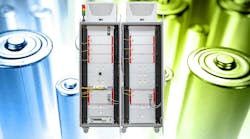Field-programmable gate arrays (FPGAs) have become the go-to component for implementing complex digital designs. Their programmability and flexible features let designers rapidly create functioning prototypes as well as final end products. Some of the latest models include multiple I/O types, NOR flash, analog-to-digital converters (ADCs), digital signal processors (DSPs), and embedded cores that let the designer create sophisticated systems.
FPGAs present their own design challenges for the engineer, but one unexpected issue often crops up in FPGA-based systems design—dc power. The need for multiple supplies of varying requirements makes the power supply’s design as much as of a problem as the digital design itself. One proven solution is powering the FPGA with dc-dc switching regulators.
FPGA Power Requirements
Most FPGAs require at least two and sometimes many dc power rails. One powers the core logic, another powers I/O interfaces, and then a third may be needed to power accessory or auxiliary circuits. Finally, a fourth may power a transceiver for communications. Some FPGAs require even more input dc voltages depending upon the features.








